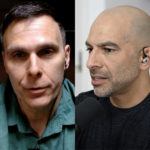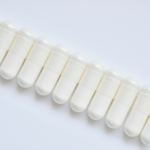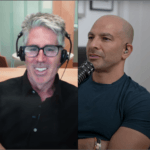As discussed in a recent newsletter and “Ask Me Anything” episode, in the high-stakes race for longevity, supplementation with the molecule nicotinamide adenine dinucleotide (NAD) has emerged as a controversial contender. Recent interest in NAD has led scientists to examine the potential of its more bioavailable precursor, nicotinamide mononucleotide (NMN), to extend both the length and quality of our lives by raising NAD levels. But clinical evidence for NMN’s benefits remains elusive, prompting further investigation – most recently, a randomized controlled study on the effects of NMN on biological age and exercise performance.
NAD, NMN, and NR Supplementation for Anti-Aging
NAD is a critical molecule for storing and transferring electrons and is involved in over 500 distinct metabolic reactions in the body, but NAD levels have been observed to wane as we age, an observation that has given rise to the hypothesis that supplementing with NAD may help to reverse aging. Adding more fuel to this idea is the fact that DNA damage accumulates with age, and NAD plays a vital role in DNA repair. However, because NAD is poorly absorbed, oral supplementation is impractical, and the efficacy of intravenous NAD injections is questionable.
Scientists have thus turned to biochemical precursors of NAD, nicotinamide riboside (NR) and NMN, which show greater bioavailability and have been proposed to combat aging and extend lifespan by raising NAD concentration at the tissue and cell levels. But as of yet, this is pure theory. The relatively few studies investigating the effect of NMN and NR on circulating NAD levels – let alone health and longevity – have generated conflicting results. So despite the popularity of these drugs, support for their use is still almost entirely theoretical, with little solid evidence to back claims of benefits. Researchers Li et al. sought to provide that evidence in their study on the effect of NMN supplementation on circulating NAD, biological aging, and exercise performance.
About the Study
In their randomized controlled trial, the researchers enrolled 80 healthy adults aged 40-65 divided into four groups receiving either a placebo or varying doses (300 mg, 600 mg, and 900 mg) of AbinoNutra™ NMN daily for 60 days (n=20 per group). In addition to circulating NAD levels, the investigators evaluated the supplement’s efficacy in slowing aging using the Aging.Ai 3.0 calculator and efficacy in improving exercise performance using a six-minute walking test (6MWT), as well as assessing safety and tolerability. The Aging.AI 3.0 calculator is a tool that uses artificial intelligence to predict a person’s biological age from a blood sample analyzed for 19 laboratory test parameters, including fasting glucose and total cholesterol. The 6MWT measures aerobic capacity and endurance by assessing the distance one can walk in six minutes, which was performed on a treadmill in the case of this study.
The results were seemingly striking: NMN supplementation led to significant increases in blood NAD concentrations across all treatment groups compared to placebo and compared to baseline measurements, and supplementation was safe and well-tolerated even at the highest doses. Elevations in circulating NAD also demonstrated a degree of dose-dependency, as both the 600-mg and 900-mg treatment groups were found to have higher NAD levels than the 300-mg group, though no difference was observed between the 600-mg and 900-mg doses. Blood biological age remained stable in the NMN groups while increasing in the placebo group, suggesting a potential age-preserving effect of NMN supplementation. The differences in biological age changes between each NMN group and placebo all reached statistical significance (p<0.05).
Furthermore, the 6MWT revealed improved endurance among NMN-treated groups, with the most significant gains observed in the 600-mg and 900-mg groups. The placebo group traveled an average of 330 m (1083 ft), whereas the 300-mg group traveled an average of 380 m (1247 ft), the 600-mg group an average of 435 m (1427 ft), and the 900-mg group an average of 480 m (1575 ft). Walking distances for all NMN groups were significantly longer than the placebo group (p<0.01), and were significantly improved relative to baseline for the 600-mg and 900-mg doses relative to baseline (p<0.05). Overall, Li et al.’s study demonstrates that NMN supplementation not only increases blood NAD concentrations but may also enhance physical performance and prevent aging, with optimal benefits seen at a daily dose of 600 mg.
Too Good to Be True?
These results paint a nice picture, and I’ll admit that these data provide fairly strong (and long-awaited) evidence that NMN supplementation can raise circulating NAD concentrations (though it bears note that this still does not establish that NMN can raise intracellular NAD concentrations, which is the important variable when it comes to NAD function). But despite this single promising result, once we start to look at the findings on biological aging and exercise performance, this study seems to be yet another game of smoke and mirrors.
Let’s start with the use of the Aging.Ai 3.0 calculator to gauge blood biological age. There is little evidence to support the accuracy, validity, or reliability of this method, and indeed, a review by Erema et al. found that its performance across several studies was not robust. Erema et al. argue that inaccuracies could arise from the use of select biomarkers instead of 41 available. Recall that the present study utilized 19. Furthermore, the calculator appears to underestimate the age of individuals over 70 years of age, indicating that it lacks discriminatory power. This might reflect biases in the calculator’s machine learning algorithm stemming from its training data.
Beyond theoretical arguments, the flaws in this methodology are apparent from the study results themselves. The trial lasted 60 days, hardly enough time to see meaningful aging changes. And yet, according to the Aging.Ai 3.0 calculator, the placebo group aged approximately 5.6 years in that time. How can that possibly make sense for a non-treatment control group? Further, average baseline “biological ages” for all four groups were considerably lower than the averages true ages across groups. These data are proof that the Aging.AI 3.0 calculator cannot provide a reliable assessment of biological age, whereas a more robust evaluation might have been achieved by utilizing a variety of clinical metrics in multiple tissues and organs to minimize the impact of individual measurement errors or biases.
A Low Bar for “Physical Performance”
This study’s choice of measuring stick for “endurance” and “energy level” was a six-minute walking test, the purpose of which is generally to measure exercise tolerance in the elderly or in patients with serious medical conditions such as COPD and heart disease. In other words, the intended purpose of such a test is to evaluate a participant’s ability to complete the task without needing breaks or experiencing significant difficulty. It is not intended to distinguish between two different – but steady and sustained – walking .
Now, recall that the study recruited participants who were 40-65 years old (mean=49.3) and healthy. There is little likelihood that a healthy 50-year-old would face any real challenge walking for six minutes, so the dynamic range for the 6MWT for these participants will likely reflect differences in baseline walking pace sustained through the six minutes rather than reflecting breaks, slowing down, or any other evident difficulty in completing the task. But baseline walking pace has little to do with “endurance” and “energy level.” In other words, this test may very well show that NMN supplementation increases walking speed, but we have no reason to think that walking speed is any reflection of VO2max, strength, or any other aspect of physical fitness.
For instance, consider how the use of stimulants, such as excessive caffeine, may lead to an increase in walking speed, while a blister on one’s foot could result in a slower pace. Similarly, a person who stands at 7 feet tall will naturally cover more ground in six minutes than someone who is only 5 feet tall simply due to greater stride length. Ultimately, none of these factors directly correlate with a person’s physical fitness level, either acutely or in the long term. Thus, when applied to healthy adults, using the 6MWT as a gauge of fitness is akin to measuring how far one can travel in a single step – variables unrelated to physical fitness are likely to have a far more substantial impact on the outcome than fitness itself, so any difference in results based on NMN supplementation status is uninterpretable without additional metrics specifically associated with fitness.
The Missing Metric for Exertion
The fact that the distance covered in meters during the 6MWT fails to capture the extent to which each person had to exert themselves presents yet another significant limitation in the interpretation of the results.
Consider two participants, one who walked 480 meters (the average for the 900-mg group) and another who covered 330 meters (the average for the placebo group). The former may appear to have greater endurance based on distance alone; however, without further information on their level of fatigue, it is difficult to draw definitive conclusions. If the individual who walked 480 meters experienced a greater level of exhaustion than the one who covered 330 meters, the test’s validity as a measure of endurance comes into question. Shorter distances may instead result from less restlessness or more indigestion or a host of other variables unrelated to endurance and energy.
The bottom line is that information beyond the distance covered matters. Factors such as heart rate, perceived exertion, and even recovery time could help paint a more accurate picture of the subjects’ endurance. A more holistic understanding of physical performance would ultimately lead to more meaningful and reliable conclusions.
Statistical vs. Clinical Significance
These results for the 6MWT illustrate an important principle in evaluating medical and scientific literature: the distinction between statistical significance and clinical significance.
Statistical significance refers to a low probability of obtaining an observed difference between two groups at least as large as the one observed in the sample, if there were no effect or association in the population from which the sample was obtained. Loosely speaking it is the probability of the data if the null hypothesis were true. This probability is usually represented with a p-value or its complement, a confidence interval, and the scientific community generally accepts that a result is “statistically significant” when that probability is no more than 5%. Importantly, this provides no information about the magnitude of a given effect – only the probability that a sample estimate of the observed magnitude would occur by chance if there were no true effect.
Clinical significance, on the other hand, is concerned with the practical importance or meaning of an observed effect in a real-world context. This takes into account other key considerations, such as whether the study design and methods are appropriate for the research question being addressed and whether the magnitude of the effect is sufficient to influence patient outcomes, healthcare decisions, or policy-making. Clinical significance is not guaranteed by statistical significance, but it indicates that an observed effect is likely to be relevant to the target population.
In the case of this study’s 6MWT results, there’s no disputing that there was a statistically significant difference between those who received NMN supplementation vs. those who did not. But healthy 50-year-olds – whether taking NMN or not – should have no difficulty in completing a 6-minute walk without tiring, so this test offers no insight into energy, endurance, or any other metric of physical fitness. In other words, Li et al.’s results have no clinical significance. So, while the 6MWT may assess aerobic endurance and functional capacity in the elderly or patients with cardiovascular or pulmonary conditions, the test is simply not a clinically meaningful metric for the population of interest in this trial.
The Bottom Line
Research exploring NAD-related longevity solutions continues, but the challenge for consumers lies in separating meaningful scientific evidence from mere speculation.
As of now, the efficacy of molecules such as NMN and NR in normative aging remains a subject of much debate. The Li et al.’s findings make one credible stride in showing that NMN supplementation raises circulating NAD in a dose-dependent manner, but their results on aging and clinically relevant physical performance offer nothing to elevate confidence in any health or longevity benefits of this drug. Their own data undercut the reliability of their aging results, and their choice of a 6MWT as a metric for endurance in healthy 50-year-olds reveals an absurd lack of understanding of clinical significance, or at best, a myopic and simplistic approach to understanding physical fitness. I look forward to reassessing the merits of these drugs based on future, more rigorous studies. But until then, my skepticism remains intact.
For a list of all previous weekly emails, click here.




